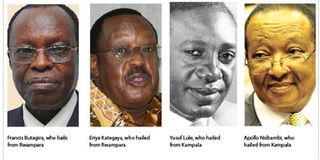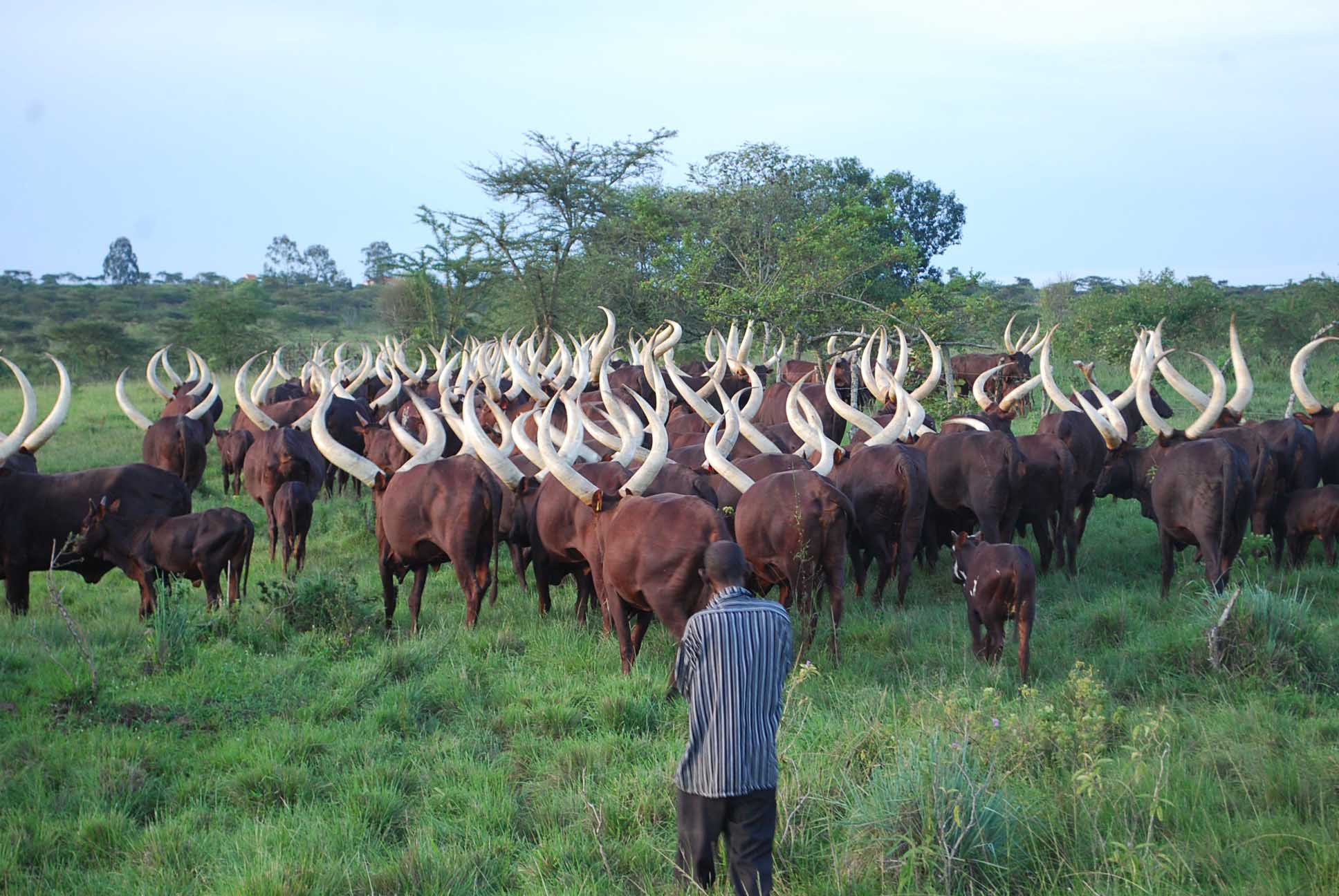Prime
Kampala, Rwampara: A tale of two Impalastans

What you need to know:
- From their establishment, Kampala just as Rwampara, not only became pertinent to its host kingdom; they both went on to produce illustrious citizens that rose to eminence across Uganda.
There are many things unique to Impala, a type of midsized antelope, that is inherent to East and Southern Africa. Even though they have never been domesticated, they are closely related to cattle, goats and sheep, sharing an array of physical traits such as hoof shape.
The herbivores are also averse to unwanted company, any approach drives them scampering for safety.
It was this last trait that drove these bovidae species out of places they had been so synonymous with, rattled enough by human activity to desert.
For ages, the Impala had been such a common sight that the Ganda people ended up naming what later became the Ugandan capital as Kampala (a hill of Impala). Hundreds of miles away to the west in Ankole, the Banyankole also followed regular encounters of the creatures to name one place of theirs Rwampara (a place of Impala).
And just like that, the two “Impalastans” of Uganda were born.
Like poles
From their establishment, Kampala just as Rwampara, not only became pertinent to its host kingdom; they both went on to produce illustrious citizens that rose to eminence across Uganda.
Kampala gave Buganda Apollo Nsibambi for Katikkiro (Prime Minister) while Rwampara gave Ankole Ernest Katungi as Enganzi, the kingdom’s equivalent of Prime Minister. Where Kampala had Yusuf Lule and Francis Babu rise to national political prominence, Rwampara answered with Eriya Kategaya. Just as Kampala’s Wasswa Birigwa scaled the heights of Uganda’s diplomatic service while Rwampara had Francis Butagira doing the same.
At one point in their comparative history, Rwampara even pulled one over Kampala by having its son of the soil—Eric Sabiiti—rise to be the first African Archbishop for the Anglican Church of Uganda, Rwanda, Burundi and Boga Zaire. This was at the expense of other Namirembe-based clerics, a move which put Ankole at the centre of the revival movement that swept across Africa at the time.
But to the extent that one can compare Kampala and Rwampara, that’s all there is to write home about. The two having diverged in both destiny and propensity.
Telling differences
As Uganda’s political and commercial capital, Kampala has grown in stature evolving into the most cosmopolitan metropolis right at the heart of the African continent.
At some point in 2010, the central government even deemed it necessary to administer the capital itself, unlike other areas where administrative functions are largely devolved.
Rwampara, on the other hand, has more or less regressed to peasantry and subsistence farming with much of its original territory falling on the sword of political gerrymandering.
In Kampala, a vibrant trading culture thrives, shepherded over decades since Alidina Visram established the first shop along what’s now the city’s Luwum Street. Its residents such as Bernard Nsubuga, a stationery goods trader at Mabirizi Complex in the central business district worry more about the currency exchange rates than they do about the weather changes and climate—well aware that fluctuations could affect imports and a failure to make rent which is charged in US dollars could be catastrophic.
“I had numerous colleagues who worked from these premises, they are all gone now. I am the only one left standing,” Mr Nsubuga said in a November 2 interview, expressing the greatest worry of a typical commercial tenant in Kampala.
Meanwhile, in Rwampara, Sylvia Bahiirwa’s main concern is that the poor rains may affect production of ghee and as a result raise the cost of eshabwe—an Ankole delicacy made through a process that involves stirring and sieving the clarified butter with rock salt.
It’s a glaring contrast, even for such barely related places, concerns of which are highlighted by Rwampara’s leaders themselves as they aim to lift household incomes by weaning women off such subsistence interests.
The area, which counts coffee, bananas, pineapple, apples and grapes among its cash crops on top of cattle rearing could be a major exporter owing to its proximity to Tanzania, Rwanda and the DR Congo, according to Molly Asiimwe, the Woman Member of Parliament for Rwampara.
Politically volatile
With neighbouring Mbarara now granted city status, Ms Asiimwe also reckons Rwampara could act as its suburb accommodating people working in the former—a strategic position which could spur construction in the area.
Unlike Kampala, which is one of the oldest districts in the country, Rwampara was only granted the same status in 2021 and this was long after losing its original constituent areas of Ruhaama, Isingiro, Kashaari and Ntungamo.
“Historically, Rwampara was like the heart of Ankole. That time when Ankole was large, Rwampara was central because it was inclusive of Ruhaama, we could include the whole of Isingiro, we could include the whole of Kashaari, all that was Rwampara. Ntungamo all that was Rwampara,” Ms Assimwe said via telephone on November 8, adding: “So historically, we were recognised as strong. If you needed something good in Ankole, you found it in Rwampara.”
Ms Asiimwe narrated that the political gerrymandering dispossessed Rwampara of its foundational structure, which had been its source of strength.
“Eventually, it became a weakness because they kept slashing it and taking off the good bit and now we became a bit of an island sandwiched by the children that we had birthed,” said Asiimwe, adding: “And for a long time, we didn’t have a say; Mbarara overshadowed us; Ruhaama overshadowed us; Bushenyi overshadowed us.”
Yet even with the new found stature as a standalone district, the legislator is worried that the high rate of leadership turnover will undermine any development incentives undertaken.
The area already boasts a unique feat as the only constituency in the country that hasn’t returned a legislator to the House in the last four election cycles.
“In Rwampara, we are like the Uganda of that time. We change leadership every five years. And then the one who comes is trying to fight the one who left while the one who left is trying to fight and come back. So in the leadership arena there is a lot of strife,” noted Asiimwe, a spouse of publisher-cum-business lobbyist Stephen Asiimwe—the Executive Director of Private Sector Foundation Uganda.
As for Impala, among their many peculiarities is inability to sleep—perhaps on account of the fact that they are always being hunted as prey by the big cats of the jungle.
Kampala, like its eponymous wild friends, is a city that never sleeps. The exact opposite of its counterpart, Rwampara.
The difference
As Uganda’s political and commercial capital, Kampala has grown in stature evolving into the most cosmopolitan metropolis right at the heart of the African continent.
At some point in 2010, the central government even deemed it necessary to administer the capital itself, unlike other areas where administrative functions are largely devolved.
Rwampara, on the other hand, has more or less regressed to peasantry and subsistence farming with much of its original territory falling on the sword of political gerrymandering.
In Kampala, a vibrant trading culture thrives, shepherded over decades since Alidina Visram established the first shop along what’s now the city’s Luwum Street.
Its residents such as Bernard Nsubuga, a stationery goods trader at Mabirizi Complex in the central business district worry more about the currency exchange rates than they do about the weather changes.




